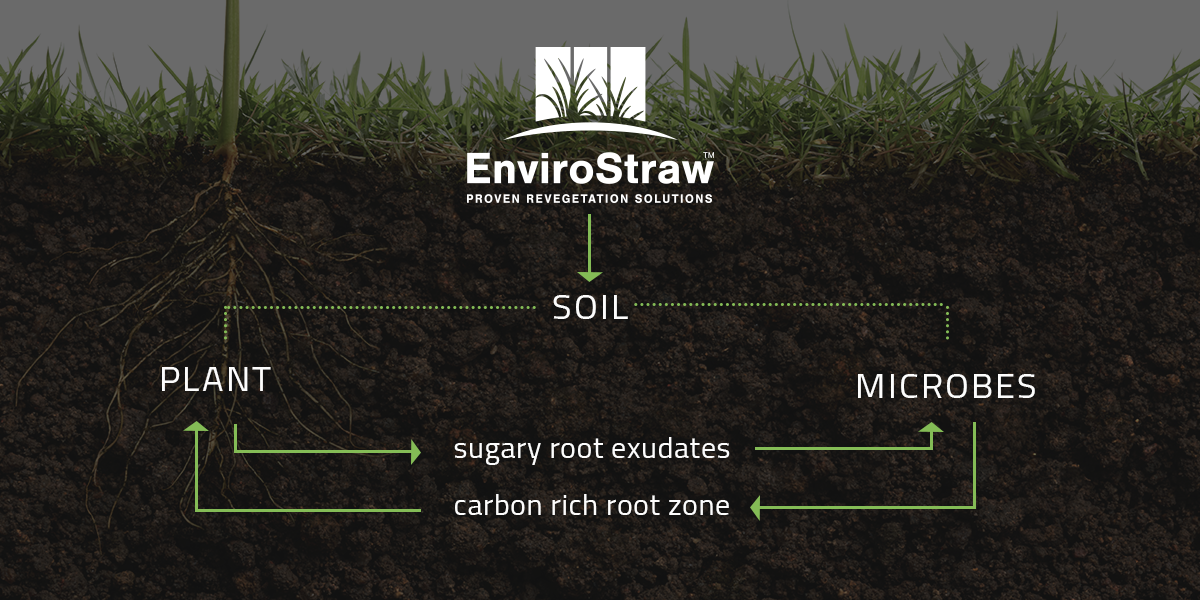On any project where ground’s been disturbed, it’s crucial to rebalance the soil in order to establish revegetation after the construction work ends. By balancing the soil in a natural way, we enhance microbial activity and increase overall soil health – improving water-holding capacity and nutrient availability, minimising erosion and developing healthier, more drought-resistant plants.
Historically, there’s a lack of understanding of how soil works. People often focus on feeding the plants water-soluble fertilisers that they access via the water they drink – however in reality, nature does it best through synergistic interactions between plants and microbial communities. When plants and soil microbes live in synergy, the plant feeds sugary root exudates (carbon fixed by photosynthesis) to the soil microbes. This gives the microbes energy and nutrients, and in return they create a healthy carbon rich root zone environment and provide the plants with enhanced nutrient and water uptake. This is truly synergy in action. However, if the plant doesn’t feed the microbes the sugary exudes, or doesn’t need to because there’s an abundance of water-soluble fertiliser available, the microbes become redundant and are no longer inclined to feed the plant, or maintain the healthy root zone. The soil can then spiral out of balance. You then need to keep adding/maintaining the plants with more water-soluble fertiliser – a task that’s challenging on a construction site.

When it comes to naturally balancing the soil, everything starts with soil testing. The typical approach is to adjust pH to a level of 6.4, so that the water-soluble fertiliser nutrients are more available to plants. Our approach is to balance the soil so the microbes can breed and form a synergy with plants – exactly the way nature does it. On a construction site we’re dealing with highly disturbed soils, with a soil microbiome that’s damaged when machinery digs it up. That’s why it’s especially important we put those microbes back – and not just any microbes.
At EnviroStraw we’ve spent many years developing a suite of resilient beneficial microbes for highly disturbed soils, because we need to ensure they can thrive. Whilst the typical approach requires consistent rain events and therefore can take years to work, our microbial approach works quickly as the microbes are like all forms of life – they want to survive and prosper. Whilst water is still critical, much less is required – because as the beneficial microbes grow, they lay down microbial biomass carbon, a ‘water sponge’ and ‘carbon glue’ in the soil, leading to improved water use efficiency, or WUE.
Happily, all EnviroStraw programs are designed for hydraulic revegetation processes, and we’ve developed a range of products to assist us with soil balance. If calcium is low, we use Calcium Plus – a product that includes different sources of calcium for immediate and longer-term availability, along with a flocculant designed to carry the calcium into the soil to which it’s applied. Carbon Plus is for use in low carbon soils and is added to kick-start the carbon-building process – both these additives are used at less than 80% of typical soil conditioning additives. At EnviroStraw we’re committed to balancing the soil in the most natural way possible – because nature always delivers the best outcomes.